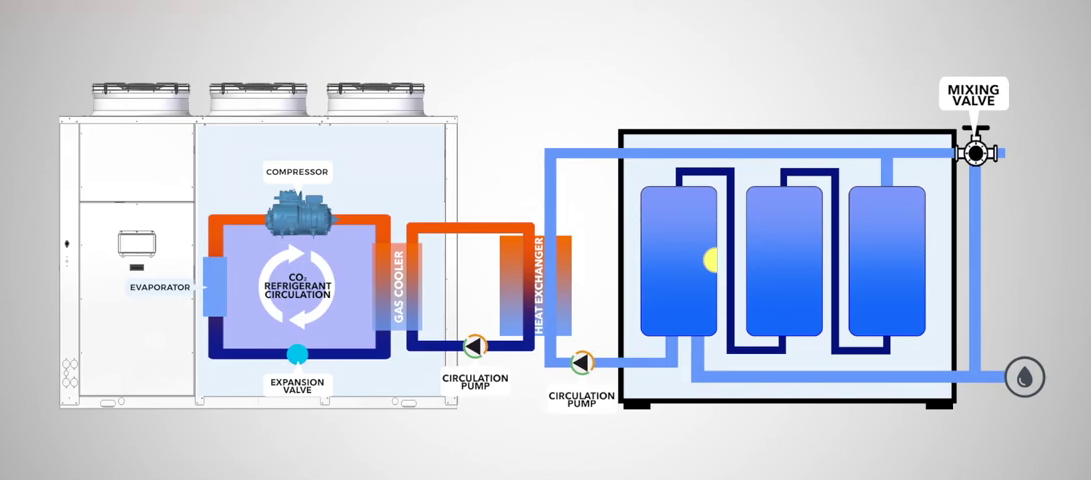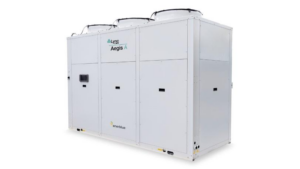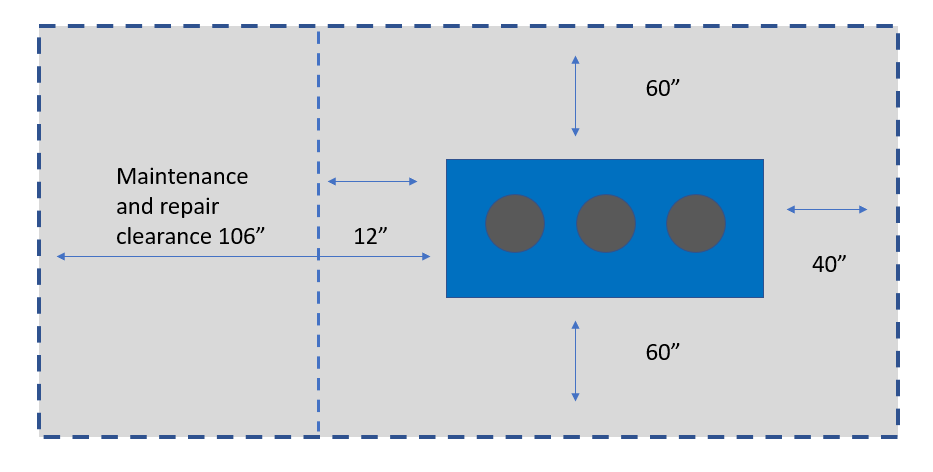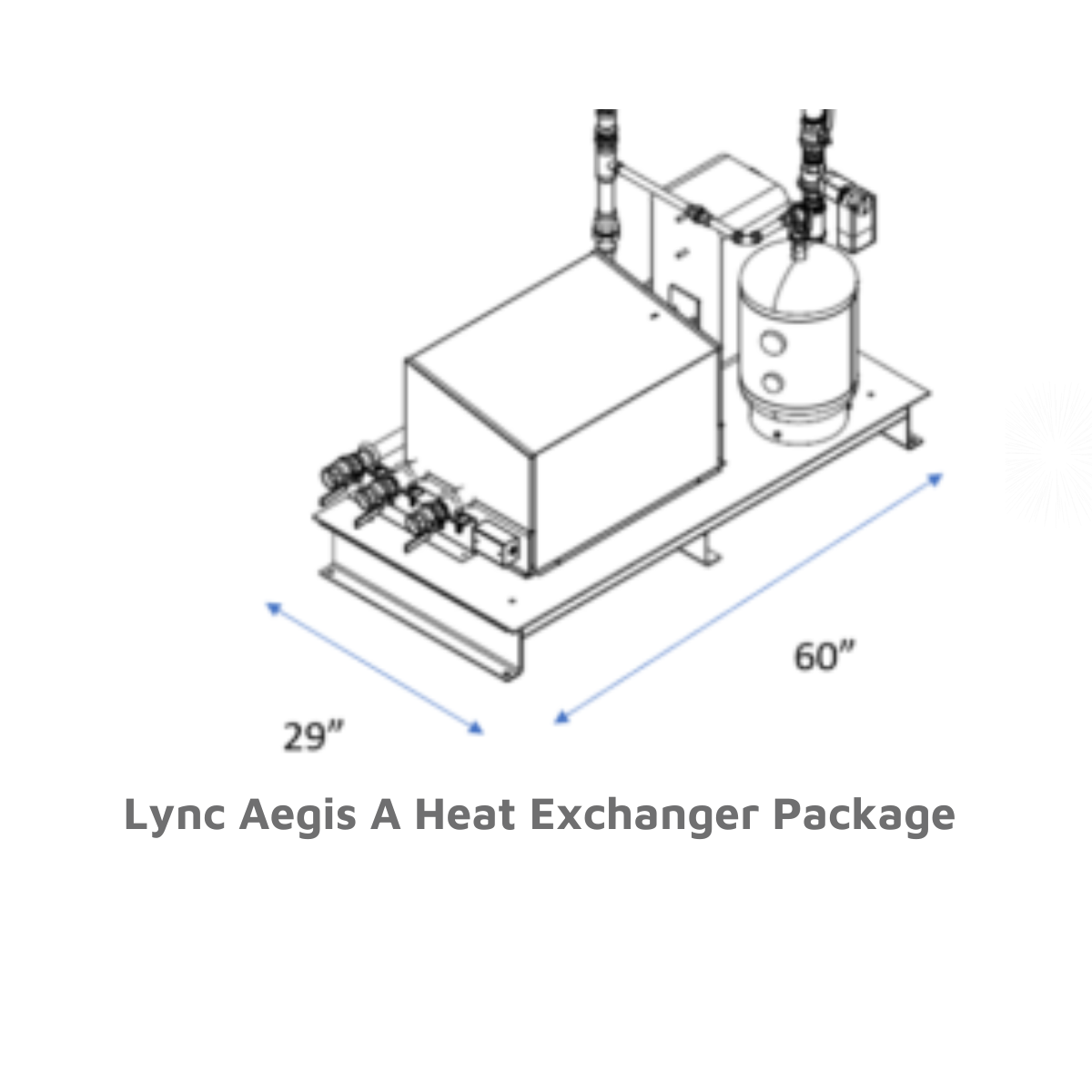 What does a commercial air source heat pump water heater look like? Where will it be located and what are the major components that the engineer will need to show in the plan documents? When we look at heat pump water heaters the physical size becomes large and the BTUH capacity is relatively lower and affected by weather. Storage, and lots of it, is required to manage the first cost. Here is a look at the parts and pieces of a commercial heat pump water heater system using R-744 refrigerant.
What does a commercial air source heat pump water heater look like? Where will it be located and what are the major components that the engineer will need to show in the plan documents? When we look at heat pump water heaters the physical size becomes large and the BTUH capacity is relatively lower and affected by weather. Storage, and lots of it, is required to manage the first cost. Here is a look at the parts and pieces of a commercial heat pump water heater system using R-744 refrigerant.
Residential Heat Pumps
It may be important to first understand what is current in standalone residential heat pump water heaters. There are heat pump water heaters that look like taller gas-fired tank-type heaters. This includes a heat pump, some storage, and even an electric resistance coil for times when the heat pump cannot produce enough hot water. These are typically referred to as “unitary” heat pump water heaters.
In the northern climates, they are often installed in the basement, so the air inlet temperature is warm enough for the heat pump. They discharge cold air out into the indoor space. That means the homeowner must use the boiler or furnace to re-heat the space. They are now paying for the heat that is removed from the incoming air. This severely reduces the overall coefficient of performance (COP).
The other problem is capacity. I can imagine two teenagers arguing about who showers first and who waits hours while the water heater reheats. The recovery rate is relatively low compared with traditional fossil fuel water heaters. This is young technology that will get better.
The Commercial Air Source Heat Pump Water Heater 
At this point, I will use the Lync by Watts brand for example sizes and space requirements. The name of the air source product is the Aegis A. Other heat pumps using R-744 will be similar.
The first piece is the heat pump itself. The Lync Aegis A shown above is a packaged heat pump. It may be mounted indoors or outdoors, but the preferred location is outdoors. There is a significant amount of air required and since we are removing the latent heat, the discharge air is cold. If it was mounted indoors, the air would have to be reheated.
When I am asked how much room these pieces of equipment require, my answer is about the size of a small car. What else would someone from Detroit compare them to? Here are three models with the sizes.
|
Model |
Width |
Depth | Height |
|
Aegis A 250 |
104” | 41” | 72” |
| Aegis A 350 | 138” | 50” |
75” |
| Aegis A 500 | 138” | 50” |
75” |
If you add clearances and a service area The space becomes larger. Here is the recommended space required for an Aegis A 350. Of course, two units will share the same service area.
 Heat Exchanger Package
Heat Exchanger Package
The second piece is the liquid-to-liquid heat double wall exchanger package. The packaged heat pump will require separation between the potable water and the heat pump. In northern climates, the fluid leaving the heat pump is subject to freezing weather. We place a heat exchanger package in the mechanical equipment room and run a closed propylene glycol loop between the two pieces. The pump and small expansion tank are part of the heat exchanger package.
The piping between the pieces and service valves would be installed by the contractor.
The Storage Tanks
The R-744 Aegis heat pump water heaters will require storage. Regardless of brand, these are not instantaneous water heaters. The recovery is much less than what you can get in fossil fuel water heaters, but they do reduce the carbon footprint. They also use less electricity per BTUH when electric resistance water heaters.
Obviously, the size and number of tanks depend on the load. The tanks in a R-744 water heater will be piped in series for single pass operation. The goal is to keep the hottest water in the last tank and only provide the coldest water from the tanks to the water heater. In part 4 of this series, I mentioned wanting the coldest water going to the R-744 heat pump. Not only do we want the coldest water going to the heat pump, but it is also required. The R-744 refrigerant has almost no global warming potential compared to other types of refrigerants. The downside is that the maximum inlet water temperature is limited to 85⁰F. They cannot be piped in multipass configuration.
A simple sketch of that piping is shown at the beginning of this article.
Other Major Required Trim Pieces
Just as with a package gas-fired water heater there are other parts required to make a complete system. The code required potable water heater expansion tank would be by others and is not in the package. The ASSE 1017 mixing valve is also separate. The domestic water recirculating pump is another piece.
Part 1: Heat Pump Water Heaters: The Road to Decarbonization
Part 2: Heat Pump Water Heaters: How They Work
Part 3: Heat Pump Water Heaters: Refrigerants and Weather

